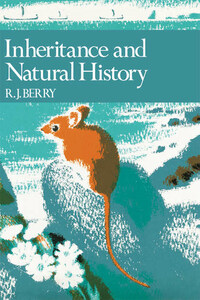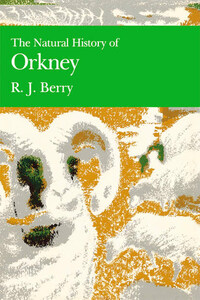Margaret Davies, C.B.E., M.A., Ph.D.
John Gilmour, M.A., V.M.H.
Kenneth Mellanby, C.B.E., Sc.D.
PHOTOGRAPHIC EDITOR
Eric Hosking, O.B.E., F.R.P.S.
The aim of this series is to interest the general reader in the wild life of Britain by recapturing the inquiring spirit of the old naturalists. The Editors believe that the natural pride of the British public in the native fauna and flora, to which must be added concern for their conservation, is best fostered by maintaining a high standard of accuracy combined with clarity of exposition in presenting the results of modern scientific research.
AT first sight âInheritance and Natural Historyâ may seem a surprising title for an addition to the New Naturalist series, which claims to deal primarily with the native fauna and flora of Britain. However, readers will soon find that Professor R. J. Berryâs book fulfils all the requirements of the New Naturalist reader. It does not simply describe the conditions which exist today; it does much to explain how the animals and plants which survive in Britain have adapted to the changing conditions of our islands over the past centuries, and how that adaptation continues until the present day.
Many naturalists in the past have considered that Britain has what they call its ânativeâ fauna and flora, consisting of those organisms which were present when the land bridge with the continent of Europe was cut some 12,000 years ago. Some have even implied that these plants and animals are in some way âsuperiorâ and more worthy of study than the so-called âaliensâ which have reached our shores, generally as the result of manâs activities, during more recent years. It is, of course, impossible to divide these two groups, natives and aliens, in a completely logical manner. We can easily recognize recent immigrants such as the Grey Squirrel and the Colorado Potato Beetle, particularly when they are serious or potential pests, but many of us accept as British the rabbit, which was introduced nearly a thousand years ago. We also generally welcome birds and insects which invade Britain under their own power, particularly in the case of species which were previously resident and were exterminated by man. So we know that our wildlife is changing in composition; some species disappear and others are introduced. However, it is generally believed that the ânativeâ species are of particular interest as they are very similar if not identical to their ancestors who moved into our country after the last ice age. Many conservationists have striven to maintain their genetic purity, and have tried to prevent contamination from alien sources, for instance by âboostingâ the population of rare species by the introduction of reinforcements from flourishing colonies in other parts of the world.
Professor Berry shows that our fauna and flora has not remained unchanged over thousands, or even hundreds, or tens, of years. He describes, from his own meticulous studies of small mammals and other creatures, particularly on many of our smaller islands, and from a comprehensive analysis of the work of many other scientists and naturalists, how evolution and natural selection still operate and how rapidly populations change in their anatomy, physiology and behaviour. His explanations are based on the use of laboratory techniques for the biochemical study of changes in the cells of the animals, and on an understanding of modern genetics and the genetic code, but he also follows in the tradition of Charles Darwin and the great British naturalists in his ability to make his own observations in the field â and, more important, to recognize and interpret the significance of these observations.
Inheritance and genetics are not easy subjects, and although Professor Berry has a genius for clear exposition some New Naturalist readers may find parts of his text, particularly when mathematical notations are included, rather heavy going. Our advice is that, on first reading, they should enjoy the main descriptive sections and skip any paragraphs which they find difficult. They will probably return to these later, and find that comprehension comes more easily than they expected, when they see how the theoretical arguments illuminate the information derived from the studies of living populations of wildlife.









